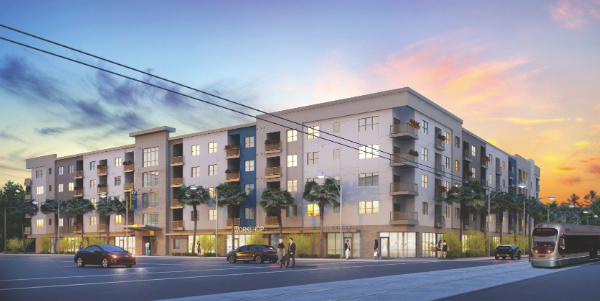Colliers International in Greater Phoenix released its mid-year 2016 Multifamily Statistics, which reports that the past three months were the strongest quarter in 10 years for property sales. The multifamily market is expected to continue its improvement during the second half of the year.
Investment activity reached its highest point since 2007 this past quarter with the greatest increase in transaction velocity occurring in properties selling for more than $20 million. Prices are rising in response to robust demand and improving property fundamentals.
Sales volume more than doubled from first quarter to second quarter. The median price per unit was up 36 percent from a year ago, reaching $106,600. Cap rates were stable in the first half, settling in the mid-5 percent range. This level remains the same as we experienced in 2015.
Vacancy in the multifamily sector rose higher in the second quarter, which is typical during the summer months. The valley-wide rate remained below 6 percent and should take a dip in the second half of the year. Vacancy is at or below 5 percent in approximately one-third of the submarkets in Greater Phoenix.
The strong demand and low vacancies have pressured rental rates in the multifamily market. Rental rates have risen 5.4 percent in the first half of 2016 with the average unit reaching $919 per month. Rental rates have increased a total of 8.5 percent in the past twelve months. Robust demand will continue to push rates higher during the second half of 2016. Union Hills/Cave Creek and Metrocenter submarkets have seen rental spikes of 11.1 and 10.1 percent respectively during the past 12 months. Eleven of the Greater Phoenix 30 submarkets are now commanding $1,000 per month or greater per unit.
Colliers International just completed the fourth straight quarter of the multifamily market delivering more than 1,000 new units. During the past 12 months, the inventory has risen more than 7,800 units.
Currently, developers are constructing 9,700 units throughout the Valley and deliveries for 2016 are expected to top 6,500 units. Multifamily permitting surged in the second quarter and year-to-date activity is up 30 percent from the same period in 2015.
Renter demand is expected to offset the inventory growth new construction brings. The primary driver for demand is employment growth, which was less robust in the first half of 2016 than anticipated. Momentum should pick up with employment growth in the second half of 2016, especially in the construction and retail sectors. Investors remain bullish on Phoenix, working to acquire properties in a low-vacancy environment ahead of forecast rent increases. The current lending environment is also spurring investment activity with low interest rates and lenders offering favorable loan-to-value ratios.
ABI Multifamily recently released a report on the Phoenix area’s multifamily market.
Downtowns around the Valley have seen an increase in jobs, with Downtown Phoenix, Old Town Scottsdale, North Tempe and the Mesa Fiesta District seeing 11,000+ job announcemnets, according to ABI.
Job growth hasn’t been the only thing boosting the multifamily market. ABI reports an increase of renters has also helped the market.
Thomas M. Brophy, director of research at ABI, reported that from 2005 to 2013, the renter household increased by 34 percent, and estimates that if current population estimates are true, the renter household is now closer to 45 percent.
The Phoenix Metro area has grown seven percent, according to Brophy’s report, with the area’s population at 4,474,800.




